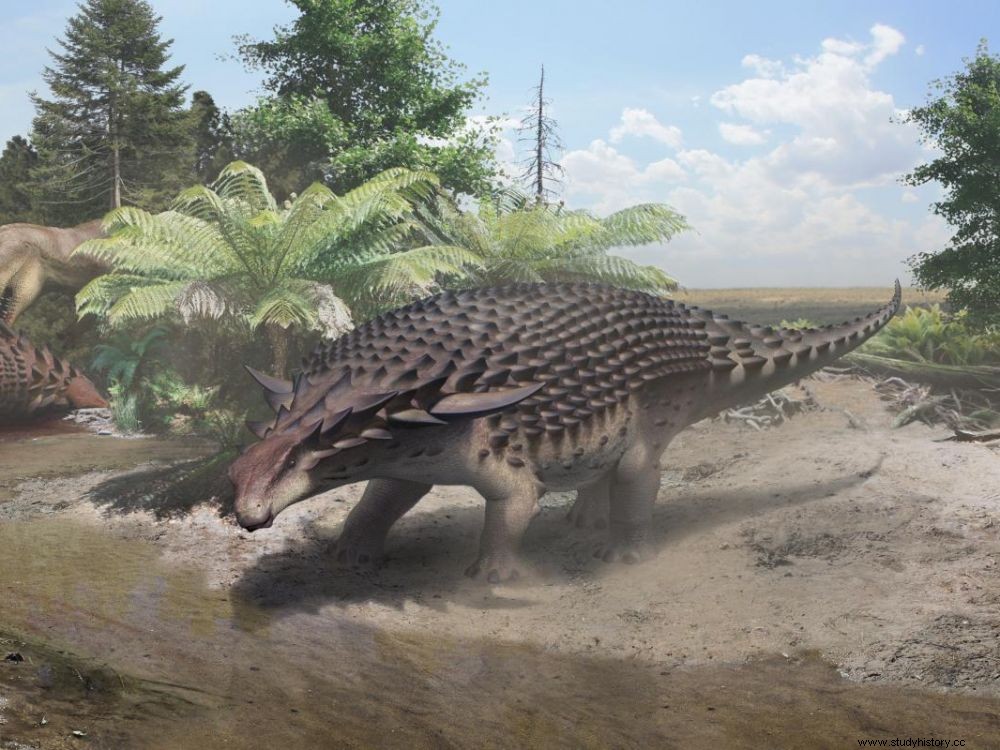Despite its impressive appearance, the Borealopelta markmitchelli d had to camouflage itself to escape its predators.

Artistic representation of Borealopelta markmitchelli .
Borealopelta markmitchelli lived 110 million years ago in the region of Alberta, Canada. It was a big dinosaur, 5.5 meters long and weighing 1300 kilos. Its body was protected by sturdy armor and its back and tail were fitted with rows of pointed scales. Despite this solid protection, he still had to be wary of his predators and, to lure them, he had adopted rudimentary camouflage, reveal the scientists of the Royal Museum of Palaeontology Tyrell who studied a particularly well-preserved fossil, discovered by chance in a mine in Alberta, Canada in 2011. They published their study in the journal Current Biology

The scales of Borealopelta markmitchelli. © Royal Tyrrell Museum of Palaeontology, Drumheller, Canada.
A camouflage adopted by many species
By analyzing its fossilized scales and the organic compounds they contain, paleontologists were able to infer their color and establish the dinosaur's pigmentation pattern. This one had reddish-brown skin, but it was darker on its back than on its stomach. This pattern of pigmentation is called "counter-illumination" and is used as a camouflage technique by many animals on land and at sea. It makes the animal appear "flatter" when viewed from the side and the makes it less detectable in sunlight. The fact that Borealopelta markmitchelli adopted this camouflage means for the researchers that it must have been under great pressure from predators. Surprising for an animal apparently so well protected. But in his time, in the heart of the Cretaceous, lived real monsters like the carcharodontosaurs that would have made short work of it...
